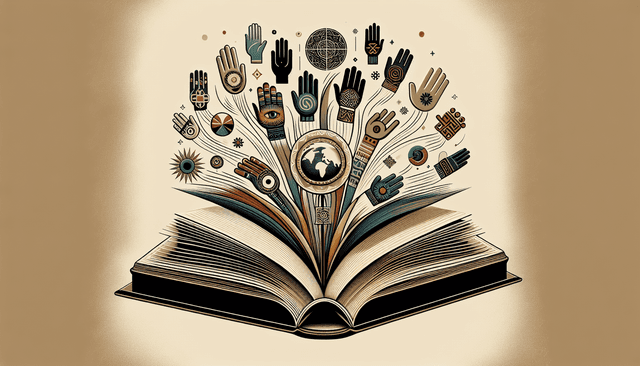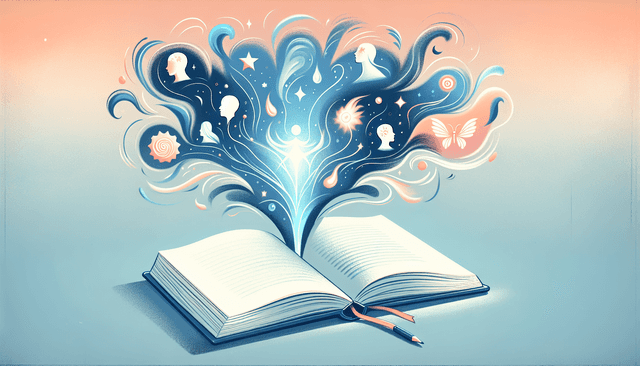Table of Contents
Hey there! Have you ever noticed how two people can tell the same story but make it feel completely different? It all boils down to the difference between point of view and perspective. That can be pretty confusing, right? You’re definitely not alone if you find this a bit tricky.
Stick around, and I promise to break it down for you. Understanding these concepts can really enhance your storytelling and even your everyday conversations. Plus, we’re diving into how point of view can change the way a story feels and how perspective shapes our understanding of the world.
We’ll explore definitions, examples, and even see how these ideas play out in real life. So, let’s unravel this mystery together!
Key Takeaways
- Point of view refers to the narrative lens used to tell a story, such as first person or third person, influencing reader connection.
- Perspective is shaped by an individual’s experiences and background, impacting how stories and interactions are interpreted.
- The distinction is that point of view focuses on how a story is told, while perspective emphasizes personal understanding.
- In storytelling, point of view impacts engagement, while perspective offers deeper insights into characters and themes.
- Recognizing both aspects improves communication, empathy, and conflict resolution in daily life.
- Understanding these differences enhances writing and storytelling, making messages more relatable and effective.

Difference Between Point of View and Perspective
1.1. Definition of Point of View
Point of view is essentially the lens through which a story is told. Think of it as the narrative viewpoint that characters or narrators use to convey their experiences. It can greatly shape how we perceive events and understand character intentions.
In literature, common points of view include first person, second person, and third person. Each type offers a unique way to connect with the narrative.
For example, a first-person narrative, which employs personal pronouns like “I” or “we,” invites readers directly into the character’s thoughts and feelings. This can create a deeply intimate reading experience.
1.2. Definition of Perspective
On the other hand, perspective refers to an individual’s understanding or interpretation shaped by their experiences. It encompasses a broader worldview, influenced by culture, background, and personal experiences.
Imagine talking to someone from a different country about a cultural event. Their perspective might reveal nuances and insights that inform their understanding, which might differ entirely from yours.
In storytelling, an author’s choice of perspective adds layers to a narrative, allowing readers to explore various interpretations of events and characters.
1.3. Key Differences Explained
1.3.1. Focus on the Character’s Voice
The primary distinction between point of view and perspective lies in their focus. Point of view is generally about the character’s voice—the specific way a narrator tells the story. It sets the narrative tone and can determine how much information is shared with the reader.
In a character-driven narrative, understanding the character’s inner voice can significantly enhance your emotional investment in the story.
1.3.2. Emphasis on Personal Experiences
While point of view relies on how the narrative is presented, perspective emphasizes personal experiences. Two readers might interpret the same story differently based on their own backgrounds.
For instance, when reading a novel about family dynamics, one reader might empathize with a character’s struggles due to their own experiences, while another might view them through a more critical lens.
1.3.3. Narrative Structure vs. Individual Understanding
Point of view shapes the narrative structure, dictating what information is revealed and how the story flows. Meanwhile, perspective shapes individual understanding, adding subjective layers to the reader’s experience.
When analyzing a plot twist, a reader’s perspective can make it seem surprising or predictable, influenced by their previous knowledge or experiences.
How Point of View Affects Storytelling
2.1. Types of Point of View
Understanding the types of point of view is essential for both writers and readers. Each type can evoke different feelings and levels of engagement.
2.1.1. First Person
The first person point of view offers an immersive storytelling experience. Readers encounter the world through “I” and “me,” gaining insight into the narrator’s thoughts and feelings.
This intimacy can create a strong emotional connection but may also limit the scope of understanding to just that character’s experience.
2.1.2. Second Person
Second person narration is a rarity but can be quite engaging. It speaks directly to the reader using “you.” This approach can create an interactive experience, making readers feel as if they are part of the story.
For example, in a choose-your-own-adventure book, this point of view encourages active participation.
2.1.3. Third Person
Third person offers the most versatility. It can be limited, focusing on one character, or omniscient, providing insight into several characters’ thoughts and motivations.
With this view, readers gain a broader understanding of the narrative, but they might not emotionally connect to a character as deeply as in a first-person account.
2.2. Impact on Reader Engagement
The choice of point of view significantly impacts reader engagement. A well-chosen narrative perspective can draw readers into the emotional heart of a story.
Consider how a first-person perspective makes readers feel like they are experiencing events alongside the character.
In contrast, a third-person limited viewpoint might foster a sense of distance, encouraging readers to think critically about the characters’ motivations.

How Perspective Shapes Understanding
3.1. Cultural and Social Influences on Perspective
Cultural and social influences play a big role in shaping our perspectives.
What we believe and how we interpret the world is often formed by the society we grew up in, including factors like family, education, and community.
For instance, a person raised in a collectivist culture may prioritize group harmony over individual desires, affecting their viewpoint in various interactions.
Understanding this can help you appreciate why people may react differently in similar situations.
When approaching diverse cultural settings, have an open mind.
Ask questions, listen actively, and be willing to learn from different experiences.
This will enhance your understanding and appreciation of others’ perspectives.
3.2. The Role of Personal Background
Your personal background can significantly influence how you perceive situations.
This includes your life experiences, education, and even your emotional history.
For example, someone with a traumatic experience related to authority may view a boss’s feedback as a threat, while another might see it as constructive criticism.
To better understand how personal background shapes perspectives, reflect on your own experiences.
Consider how they colored your viewpoint in specific situations.
This self-awareness can bridge gaps in communication, allowing for a more nuanced understanding of different viewpoints.
3.3. Perspective in Real Life Situations
Perspective matters in real-life situations more than you might think.
When conflicts arise, recognizing multiple viewpoints can lead to more effective resolutions.
Take the workplace, for instance: when colleagues disagree, a quick acknowledgment of each person’s perspective can diffuse tension.
Try using phrases such as “I see where you’re coming from” or “That’s an interesting point.”
This fosters a respectful dialogue where everyone feels heard.
Real-life examples in literature or news can also illustrate how perspective shifts outcomes, often highlighting the need for empathy and understanding in narrating events.

Examples of Point of View and Perspective in Literature
4.1. Famous Works Featuring Unique Points of View
In the world of literature, unique points of view can dramatically shift how we perceive a story.
For instance, a prime example is “The Grapes of Wrath” by John Steinbeck, told through a third-person omniscient perspective that captures the collective struggles of a family during the Great Depression.
This narrative choice provides a broader commentary on social injustice, moving beyond just personal stories to reflect larger societal issues.
Another interesting example is “A Clockwork Orange” by Anthony Burgess, narrated in the first person by the protagonist Alex.
This immersive experience pulls readers directly into Alex’s chaotic world, making his perspective all the more impactful.
These examples show how a distinctive point of view can shape the narrative’s themes and emotional weight, enriching the reader’s experience.
4.2. Analyzing Characters’ Perspectives
When we look closely at characters’ perspectives, we uncover the layers that drive their actions.
A great example is in “The Great Gatsby” by F. Scott Fitzgerald, where Nick Carraway’s perspective filters our understanding of Gatsby and the Jazz Age.
Nick’s loyalty and disdain create a complex view, making readers question reliability and motive.
Similarly, in “Eleanor Oliphant Is Completely Fine” by Gail Honeyman, we explore Eleanor’s isolated and peculiar perspective that challenges social norms, inviting empathy.
This deep dive into characters’ viewpoints not only enhances our understanding but fosters a connection with their struggles.
Comparing Point of View and Perspective in Everyday Life
5.1. Point of View in Conversations
In conversations, awareness of your point of view can make a huge difference in how messages are received.
Using “I” statements like “I feel concerned when…” invites open dialogue rather than defensiveness.
This simple tweak helps clarify your feelings without making others feel attacked.
Furthermore, being mindful of non-verbal cues can also help navigate discussions.
Maintaining eye contact and an open posture fosters a positive environment, encouraging others to share their perspectives, too.
5.2. Perspective in Conflict Resolution
When it comes to conflict resolution, acknowledging different perspectives is vital.
First, it’s key to actively listen. Restate what you hear to show you’re engaged, like saying, “What I hear is…”
This technique not only confirms understanding but also opens up a safe space for dialogue.
Additionally, seeking out common ground is incredibly helpful.
Expressing shared goals can shift the focus from the conflict to collaborative solutions, which is often more productive.
5.3. The Importance of Understanding Both
Grasping both point of view and perspective equips you for healthier relationships.
Start by asking yourself how others might interpret situations differently.
This self-reflection promotes understanding and acceptance, leading to kinder interactions.
Also, explore diverse viewpoints through literature or conversations with people from different backgrounds.
This practice widens your understanding and nurtures compassion, essential ingredients for lasting connections.
Conclusion: Why Knowing the Difference Matters
6.1. Application to Writing and Communication
Understanding the difference between point of view and perspective can seriously enhance your writing and everyday communication.
When crafting a narrative, carefully consider the point of view that will deliver your message most effectively.
Choosing the right voice can strengthen reader engagement and elicit deeper emotional responses.
In daily interactions, awareness of perspectives fosters clearer communication.
This awareness helps prevent misunderstandings, making discussions more constructive.
6.2. Enhancing Empathy and Understanding in Interactions
The practice of distinguishing between point of view and perspective ultimately builds empathy in our interactions.
By consciously striving to see the world through others’ eyes, we enrich our relationships.
This empathy cultivates emotional intelligence, which is invaluable both personally and professionally.
In learning to appreciate these dynamics, we can foster a supportive environment, enhancing communication across all aspects of life.
FAQs
Point of view refers to the narrative voice in storytelling, while perspective encompasses an individual’s personal experiences and beliefs that shape their interpretation of events. Understanding both is essential for deeper engagement with texts.
The choice of point of view determines how much the reader knows about characters and events. First-person creates intimacy, while third-person offers a broader view, influencing reader engagement and emotional connection.
Perspective allows individuals to interpret situations based on their cultural, social, and personal backgrounds. This influences decision-making and conflict resolution, highlighting the importance of considering diverse viewpoints for better understanding.
Understanding the difference enhances empathy and communication effectiveness. It enables clearer interactions by recognizing how narrative techniques and personal experiences influence perceptions, leading to improved relationships and conflict resolution.



